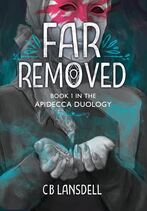|
I loved this book.
It has so much that is fresh and different which the author uses consistently as driving forces in the novel. Knyadrea is a moon world, part of a two-moon system with a complex “seasonal” structure between the moons, planet (uninhabited), and the sun. The author never forgets to place us in the right season and all the pros and cons, to the characters, of that season. The Knyads (the sentient species) have a unique multi-part life cycle. This affects their individual outlooks and gives each of them depth as they share their stories. They are also both familiarly human and sharply distinguished. Their skin is multi-hued, for example and they lack hair but have colorful tendrils. Society is also unique. Knyadrea is divided into clans. These clans are then stratified into Orta, Praemor, and Erud. The five Erud clans rule Knyadrea with a despotic, paranoid fist. There is also a large group of knyads who are unclassified, the lowest of the low. Our main characters, Oklas and Prismer, are multi-dimensional and each carry their struggles, successes, and failures to us, the readers, in a way which pulls us deeper into the story and finds us hoping for their success. Secondary characters also have depth. They are deftly used to give us more information – about the culture, the life cycle, the politics, the seasons, the history, and the main characters themselves. In short, Far Removed is a well-done, unique, intriguing, and engaging story. I cannot wait for its companion volume, the conclusion to the Apideccan Duology!
0 Comments
The Greks Bring Gifts was originally published in 1964 and reprinted in paperback in 1968 (the cover above). It is a classic science fiction tale of apparently benevolent aliens who turn out to be not so.
Murray Leinster (pseudonym of William F. Jenkins) was a prolific early science fiction writer with literally hundreds of stories, articles, radio plays, television scripts, and other works. He published his first story in 1916 and his last novel in 1969. He also wrote other genre fiction during the heyday of the pulps and would use variations of William Jenkins if a magazine already had one of his stories under the Leinster name! His stories include one of the first mentions of a universal translator ("First Contact" 1945) and one of the first descriptions of a computer ("A Logic Called Joe" 1946). He also won a Hugo award for his novelette "Exploration Team" in 1956. Greks is available on Biblio for as little as $3.97, including shipping. From the back of The Greks Bring Gifts: They came to Earth in their space ship, bearing fabulous gifts - such as machines that did any day job automatically, and fertilizer that made plants shoot up overnight. But they presented their gifts with contempt, and with a look in their eyes that made people feel "creepy". Still, because of the brave new world they promised, they Greks could be forgiven anything - until they left and people discovered the machines were breaking down. Then their only choice was to beg the Greks to come back, on their own terms. And they knew the terms would be hard... The Long Way Home was originally published as a serial novel with the title No World of Their Own in the magazine Astounding in 1955. It was printed in book form in 1978 with the return of some parts that had been edited out of the serial version by Tor.
The story revolves around a crew of four humans who had embarked on an experimental hyperspace-drive equipped spaceship for a one year mission. They find many planets and aliens in their journey and even add one alien to the crew - the feline-looking humanoid on the cover. However, upon their return they find that the premise of the drive was false and that 5000 years have passed since their departure. Most of the novel concentrates on the crew and the alien, Saris, and how they manage to unwind a cold war between Earth and its Centauri colonies (with aliens of their own) and the oppressive rule of a computer known as the Technon. There is a significant part of the story told from the alien perspective of Saris making it one of the first with that kind of plot line. It was written over half a century ago. Despite that it still has over 160 ratings on Goodreads. It does get poor marks, generally, for the characters; with the caveat that Anderson's characters usually have more depth. It does get high marks for premise and plot and the science, though not perfect, has a lot of elements that are still believable (or actual) in the current state. Overall it is a recommended hard science fiction read from the "classic" era. It can be snatched up on Biblio for as little as $3.97 including shipping. |
AuthorMe as a critic (be careful! the harshness will be well concealed!) Archives
April 2024
Categories
All
|





 RSS Feed
RSS Feed